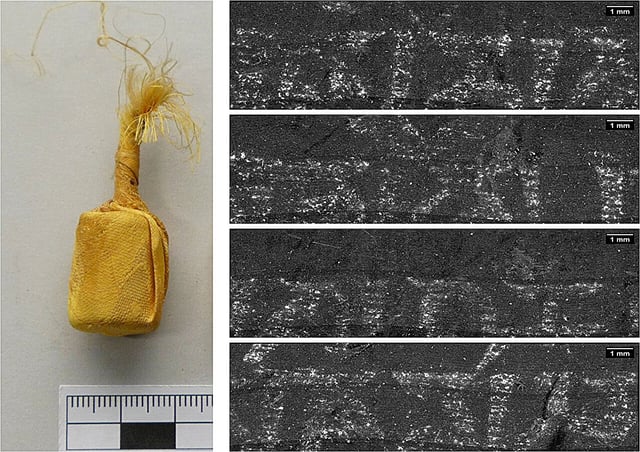Overview
- Researchers at Helmholtz-Zentrum Berlin used 3D X-ray tomography and AI-accelerated mathematical unrolling to digitally unwrap one of three silk-wrapped Mongolian dharani scrolls without harming the material.
- High-resolution scans showed each scroll contained about 50 windings of parchment over 80 cm long, with ink composed of metal particles rather than traditional soot and animal glue.
- Virtual unfolding exposed Tibetan characters structured in Sanskrit grammar that spelled out the Buddhist mantra “Om mani padme hum,” shedding new light on nomadic devotional traditions.
- The study appears in the Journal of Cultural Heritage and demonstrates how imaging techniques from battery research can be repurposed for cultural heritage preservation.
- The Gungervaa shrine housing the scroll is featured in the “Restoration in Dialogue” exhibition at Berlin’s Humboldt Forum until June 1, 2026, with plans to show it in Mongolia afterward.
